The Problem: Phones Can Catch Fire
It’s true: phones can catch fire. Yes, the chances of your phone catching fire are small. However, even if the odds are small, the consequences can be enormous. More to the point, in places where there are a lot of phones – that is to say, anywhere that people gather – the odds of someone’sphone catching fire goes up. Knowing how to put out a phone fire is good information for anyone, but if you’re responsible for the safety of a group of people, whether it’s a workplace, mass transit, a house of worship, or an entertainment venue, it’s essential.
Furthermore, if a phone does catch fire, it’s a particularly dangerous kind of fire, as it originates in your phone’s lithium-ion battery. These kinds of fires are extra hard to extinguish, for reasons you’ll find out about below. First, let’s talk a little bit about what makes these fires so dangerous.
Why are Phone Fires Dangerous?
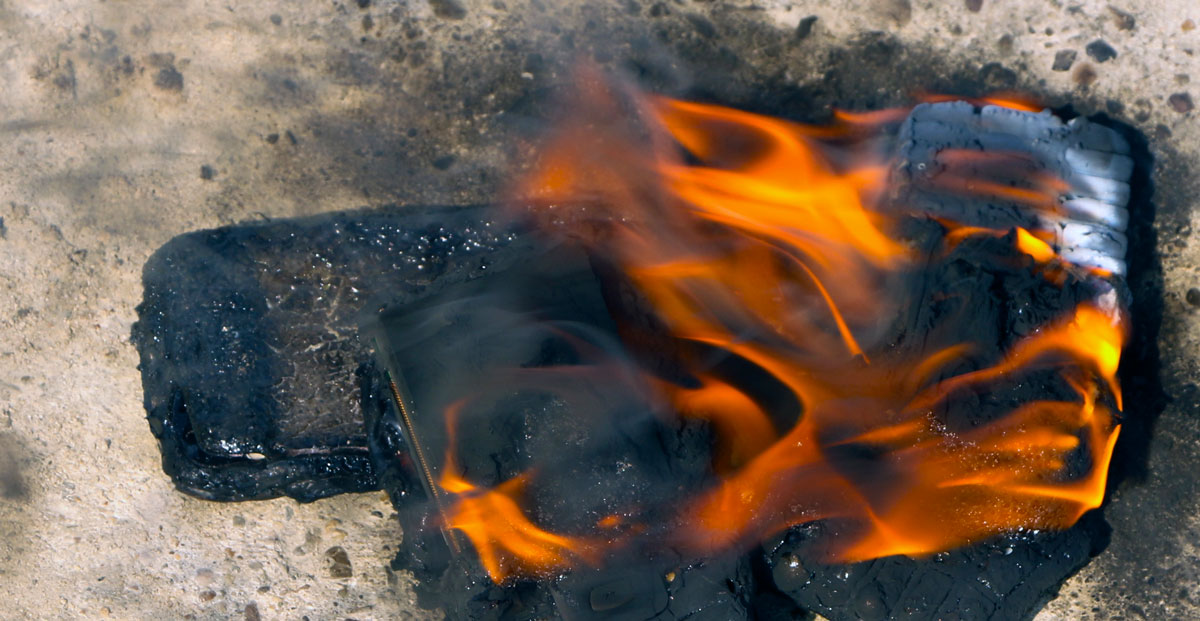
As we often see in the news, the results of a lithium-ion battery fire can be catastrophic, ranging from property damage to personal injury – even death. That’s because lithium-ion batteries, even small ones, burn at extremely high temperatures. Temperatures can quickly hit 500 degrees F, and top out at over 1000 degrees F. If that fire is near clothing, furniture, carpeting, or other flammables, the danger to your home and family is severe.
In New York City in 2023, lithium-ion batteries were responsible for 240 fires, 124 injuries, and 18 deaths. And the trend is not good: from 2021 through 2023, New York experienced a significant increase in lithium-ion battery fires (1,500%), injuries (686%), and deaths (2,675%).

What Causes Phone Fires?
Lithium-ion batteries are susceptible to a process called thermal runaway. Put simply, this means that the initial fire releases gases that cause more fire (sometimes explosively.) This is often the result of a damaged or poor-quality battery or charger.
Cells can overheat and explode when safety vents are blocked, overwhelmed, or if a cell is punctured. Cell venting of smoke or gas can also arise from a range of other causes including external overheating, external short circuiting, internal short circuiting, recharging a battery that has been over-discharged, high-rate charging, and even charging at cold temperatures.
An undamaged, high-quality battery with a proper charger rarely goes into thermal runaway, but any number of things, many of them invisible, can start the process. Here are just a few:
- Damaged battery (dropped, punctured, crushed, waterlogged, etc.)
- Overcharging
- Using a charger not designed for the battery
- Exposure to extreme temperatures
- Manufacturing defects

How to Keep Your Phone From Catching Fire
An ounce of prevention is worth a pound of cure. Ideally, you will never have to extinguish a phone fire. The good news is, there are a number of steps you can take to prevent your phone from catching fire. We’ve covered this in more detail elsewhere, but here are some quick tips for preventing phone fires:
- Use only manufacturer-approved, UL-certified batteries and chargers
- Inspect your phone and charger regularly for damage
- Unplug your phone after it’s fully charged
- Keep your battery or device away from extreme temperatures
- Use a fireproof sleeve when charging your phone
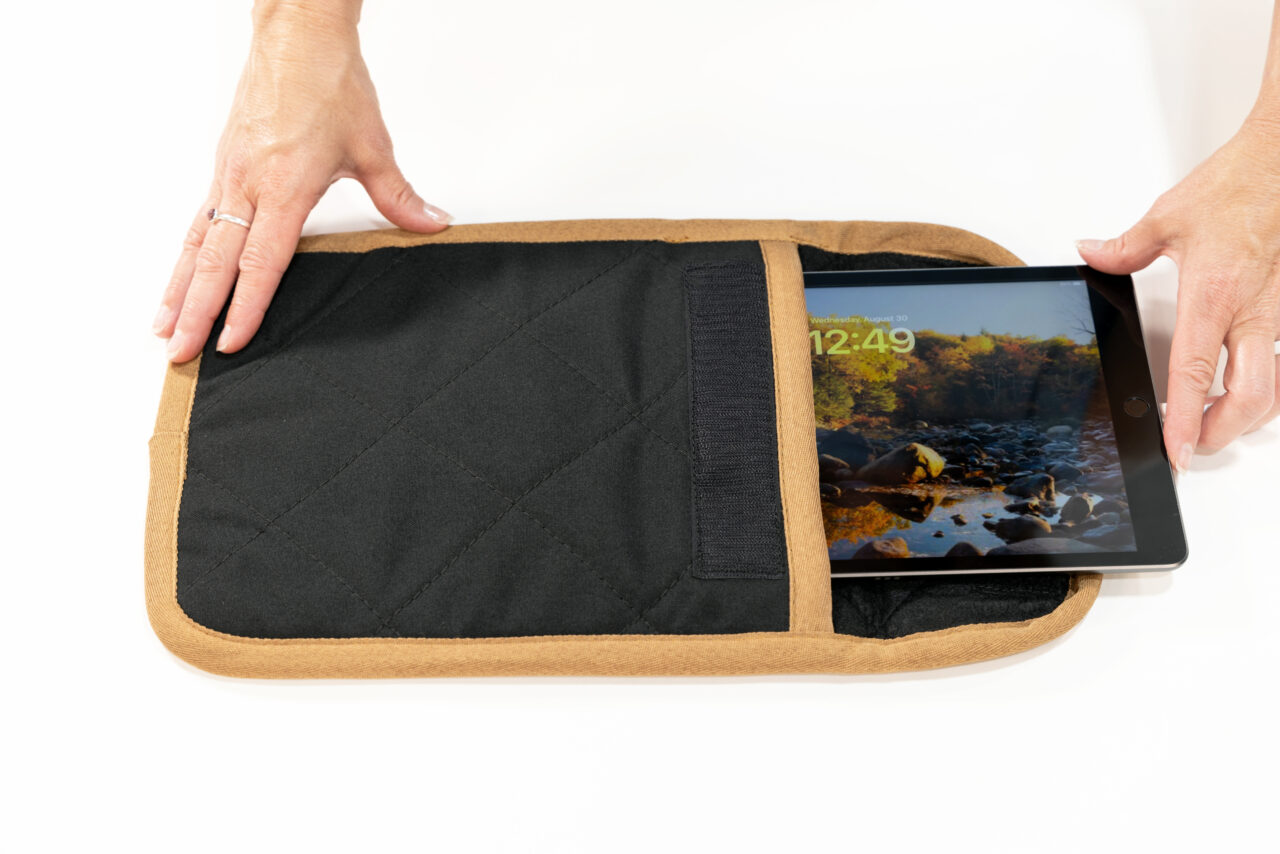
Preventing phone fires in the first place is always better than trying to put them out. Unfortunately, there may come a time when you’ll find yourself having to deal with a phone fire.
How to Put Out a Phone Fire - and How Not To
If you find yourself in the unfortunate situation of having to put out a phone fire, you’re in luck: there are several products available that can effectively extinguish a phone that’s gone into thermal runaway. But they might not be what you think.
How NOT to Stop a Cell Phone Fire
There is a lot of misinformation out there about how to put out a phone fire. Because the threat of thermal runaway in lithium-ion batteries is fairly new, even fire safety experts aren’t always aware of the best way. Most mainstream recommendations have serious downsides. Here are some:
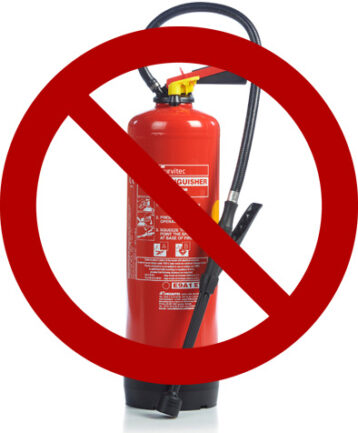
Foam extinguisher
This is what you’d find in the familiar red household fire extinguisher canister. It might work. It might not. Foam is designed to smother the fire by creating a film on the surface of the fire source, but the film may not survive the high temperatures generated by a lithium-ion battery fire.
Water
Water is a readily available extinguishing agent that has long been recommended for battery fires. And if you happen to have a sink or tub already full of water, you might be able to stop the fire by simply dropping your phone into it. But if all you have is a tap, or some bottled water, you’re probably out of luck. Here’s the problem with water:
- Does not break the thermal runaway reaction.
- Can create electrical shorts.
- Accelerates hydrogen gas release.
- Creates hydrofluoric acid, which is highly toxic and corrosive.
As we’ve seen, most traditional fire extinguishing solutions have serious drawbacks. So what does work?
The Best Solutions for Phone Fires
We at CellBlock FCS have made it our business to understand, in detail, the unique properties of lithium-ion battery fires, so that we can create solutions that work. If you find yourself in a situation where there’s a battery fire, you’ll want to have one or more of these products on hand.
- High Heat Gloves
- FireShield Blanket
- PED-Pad
- LIBIK EHS Kit
High Heat Gloves
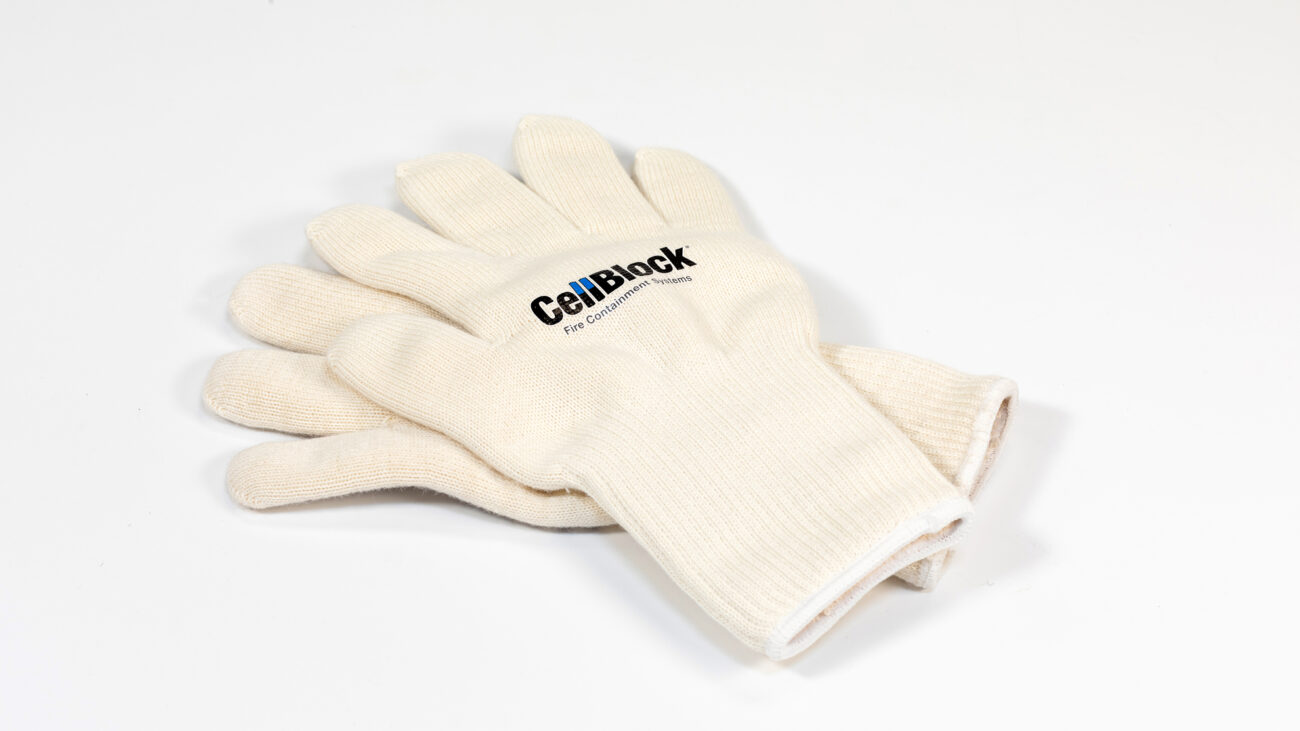
These gloves, made from heat-resistant textiles that can survive temperatures of over 2000ºF, were developed for first responders to handle lithium-ion batteries in thermal runaway (on fire). You can pick up a smoking or burning cell phone with these gloves without fear of burning your hands
Features of the CellBlock High Heat Glove:
- 12-second FAA burn test qualified
- Durable and light weight
- High dexterity
- Silicon non-slip grip
Watch CellBlock High Heat Gloves in action:
FireShield Blanket

Our LIBIK FireShield Blanket is an extraordinary fire safety tool. It’s made from proprietary textiles that are engineered to withstand temperatures over 1832°F. The top layer is a fire-resistant Kevlar blend, while the bottom black felt layer actively disperses heat. It also features a handle on each corner for ease of use.
With a 30″ x 30″ span, the FireShield Blanket provides unmatched protection when it comes to battery fires – or any other high-heat incident.
- Personal shield when approaching a phone on fire
- Protect surrounding surfaces when dealing with a compromised phone
- Use as an additional containment layer in conjunction with our PED‑Pad (see below) to extinguish a fire.
Take a look at the FireShield Blanket:
PED-Pad
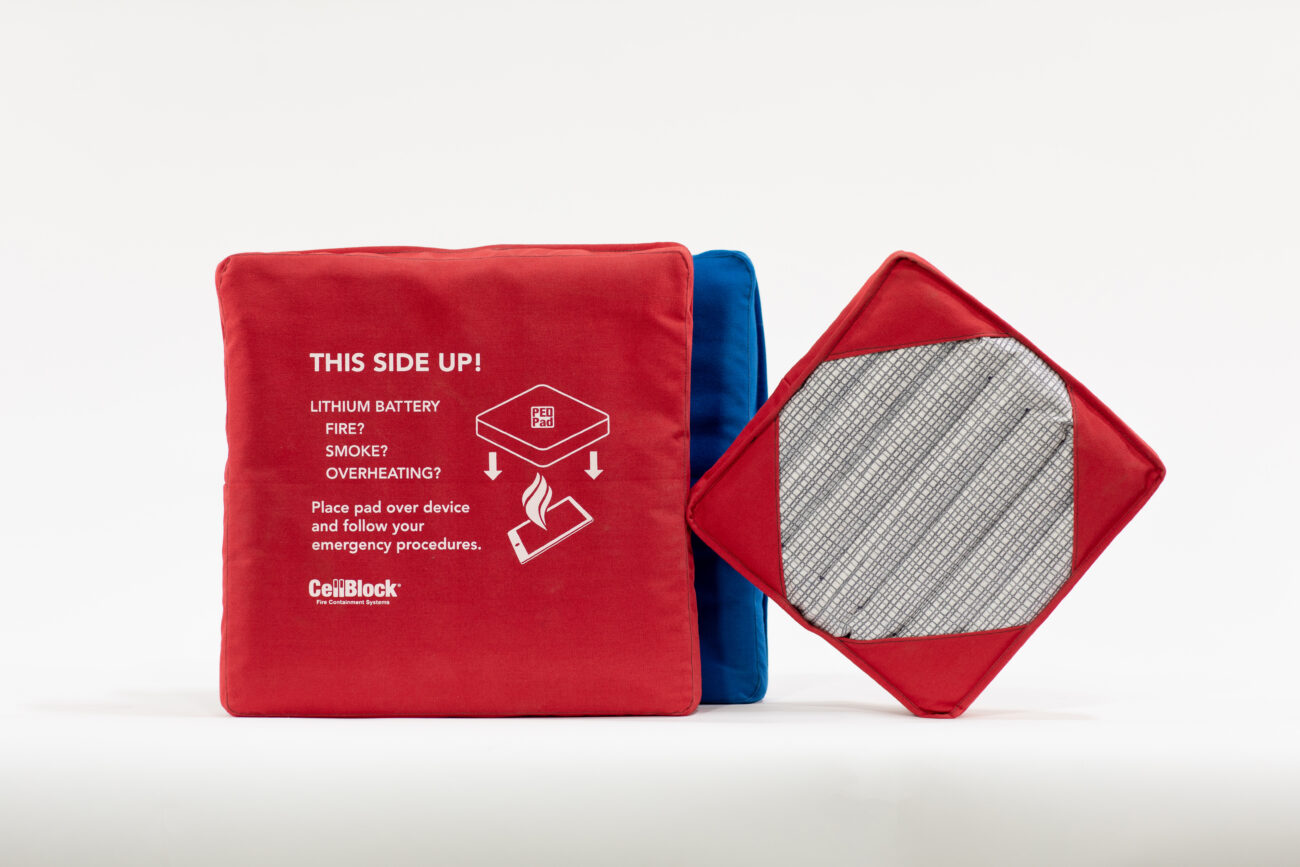
The PED-Pad pillow is filled with our proprietary fire extinguishing media, CellBlockEX. When the PED-Pad is placed on top of the compromised phone, CellBlockEX is automatically deployed, which smothers the burning phone, extinguishing the fire and consuming smoke and fumes.
Watch the PED-Pad in action:
LIBIK EHS Kit
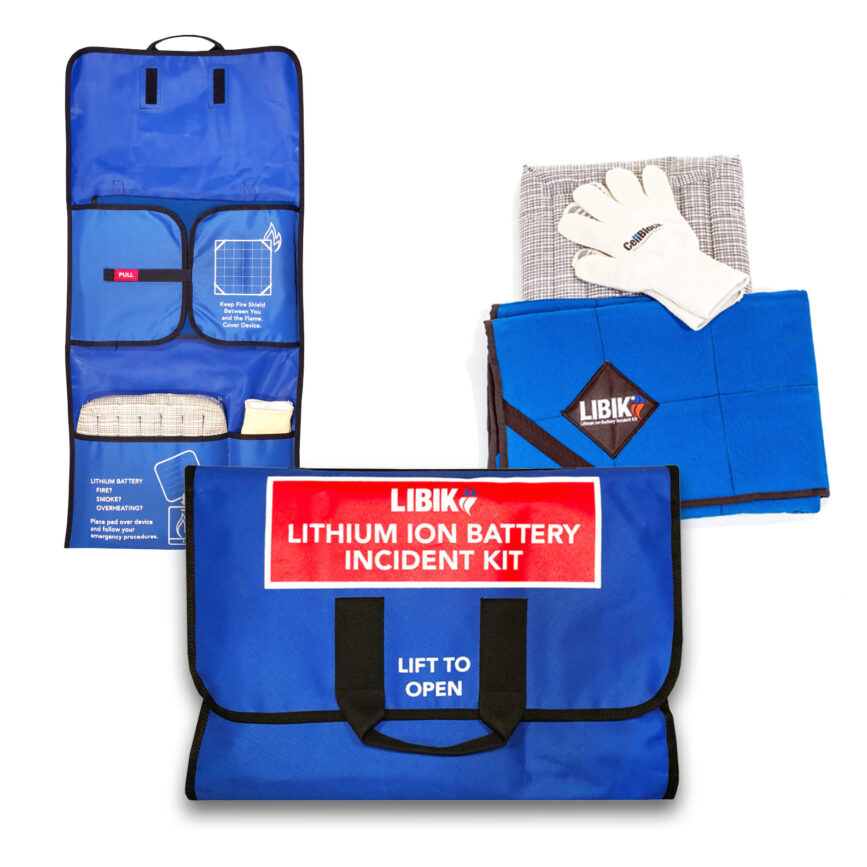
LIBIK stands for Lithium-Ion Battery Incident Kit, and that’s exactly what it is: a kit that contains everything you need to put out a battery fire. EHS, as you may know, stands for Environment, Health, and Safety, and it’s what we call our lightest, most portable version of the LIBIK.
The EHS Kit, which can be mounted on a wall, allows for quick deployment of fire suppression tools. Easy access to the LIBIK and its contents makes it ideal for laboratory environments, hospitals, schools, manufacturing settings, and more.
Each kit includes:
- PED-Pad
- LIBIK FireShield Blanket
- CellBlock High Heat Gloves
Watch the EHS Kit put out a fire:
What About My Tablet?
We’ve been focused on how to put out a phone fire, and that makes sense: there are nearly as many phones in our lives as there are people. But what about tablets? Can’t they catch fire, too?
Of course they can. And everything you’ve just learned about putting out a phone fire, including which products to use, can also be applied to a tablet that has caught fire. You can remove the tablet from the area with High Heat Gloves; you can wrap it up and isolate it with a FireShield blanket, and you can extinguish the fire with a PED-Pad. Furthermore, with a LIBIK EHS Kit, you have a full suite of fire containment tools you can use to control a tablet fire.
What about a laptop? Yes, all of these tools can be used on laptop fires as well. Vape pens, handheld video games – you name it: any personal electronic device (PED) that catches fire can be controlled with CellBlock’s proprietary solutions.
Safety First
If your work requires you to be in a place where people gather, then you’re at risk for exposure to a phone fire. The most important thing is that everyone is safe. With these tips about how to put out a phone fire (or a tablet, laptop, vape pen, etc. fire), you should be all set should one occur.
